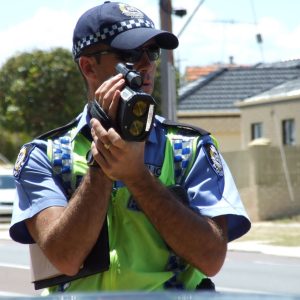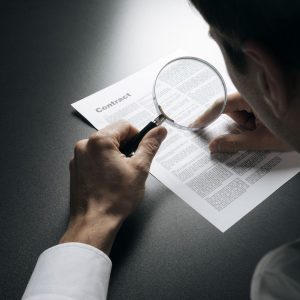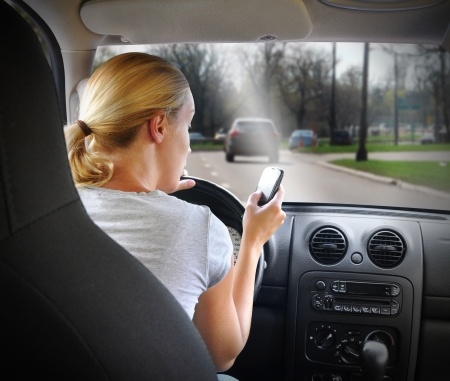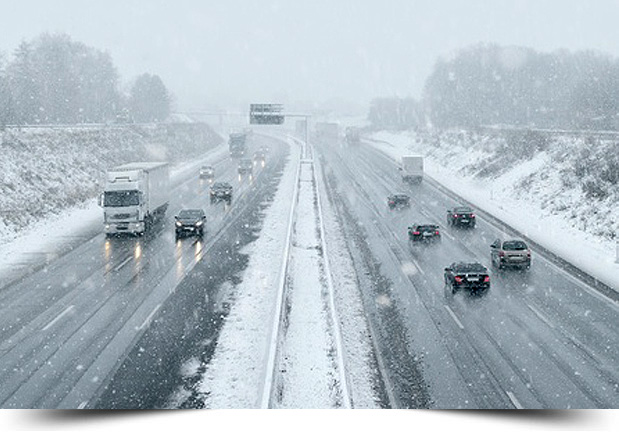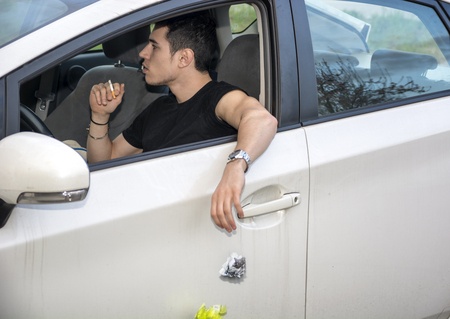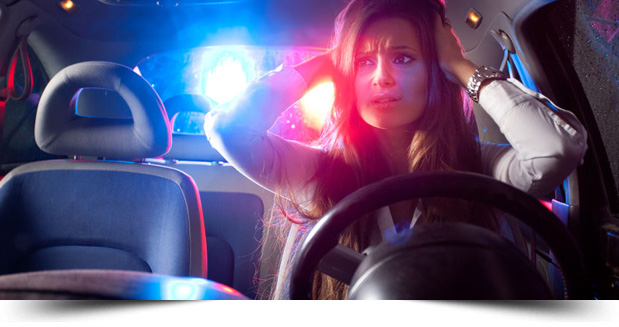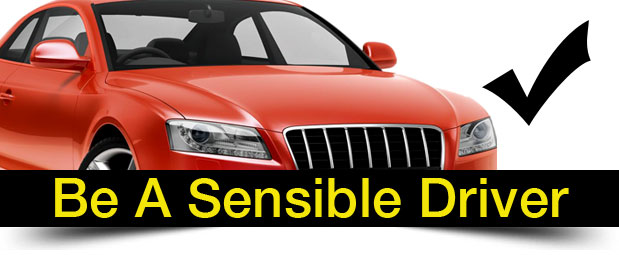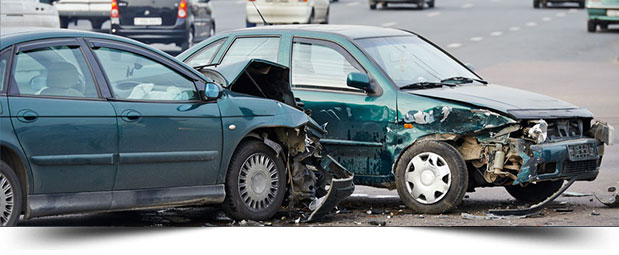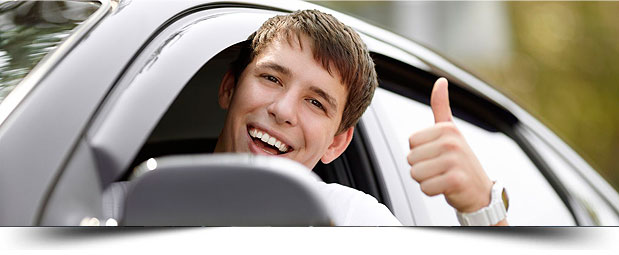Ontario to toughen penalties for driving under the influence of marijuana
 Ontario will have a zero tolerance policy toward young drivers and truckers who use marijuana.
Ontario will have a zero tolerance policy toward young drivers and truckers who use marijuana.
Premier Kathleen Wynne has said that commercial truckers, drivers 21 and under, and novice motorists will face stiff penalties if caught behind the wheel after using cannabis.
For a first occurrence young drivers and G1, G2, M1, and M2 licence holders will face a three-day suspension and a $250 fine.
A second occurrence will result in a week-long suspension and a $350 fine with all subsequent offences penalized with a 30-day suspension and a $450 fine.
Similarly, commercial drivers will face three-day suspensions any time they are caught and fined up to $450.
All other drivers found to be within the blood-alcohol concentrate range of up to .08 will face suspensions of between three and 30 days and fines of up to $450.
Those with blood-alcohol concentrate levels above .08 face 90-day suspension and $550 fines.
“There is no excuse for impaired driving — whether it is due to drugs or alcohol,” said Wynne.
MADD Canada’s Andrew Murie said marijuana is by far the most-seen drug in fatal accidents.
Murie said he was hopeful upcoming oral-fluid road tests will help reduce cannabis use by drivers.
Read more: LCBO to run 150 marijuana stores
Ontario is prepping reefer awareness campaign on the dangers of marijuana as legalization date approaches
Poll says Ontarians are high on government control of marijuana retailing
Transportation Minister Steven Del Duca said it’s necessary to “introduce harsher consequences for those who choose to drive while impaired” — by drugs or alcohol.
“All of these measures are in addition to federal criminal charges for impaired driving, which ultimately could result in a loss of licence, additional fines, or jail time,” said Del Duca.
“Let me be clear: driving while impaired is not acceptable and will not be tolerated,” he said.
MADD Canada’s Andrew Murie noted that “by far cannabis is the leading drug when it comes to road fatalities when drugs are present.”
“So there are lot of things we need to do,” said Murie, adding he was hopeful upcoming oral-fluid road tests would help discourage marijuana use by drivers.
The tests, which examine THC levels in saliva, still must be approved by the federal government and it’s unclear how effective they will be in cold weather. Most U.S. jurisdictions use blood tests.
Progressive Conservative MPP Michael Harris (Kitchener-Conestoga) said the government will “need to provide police with the needed resources to keep our streets safe.”
Harris noted the Ontario Provincial Police has estimated it will need up to 500 specially trained officers to enforce the law. Currently, only 83 are trained to recognize drug-impaired driving.
“The Ontario PCs will continue to listen and consult with law enforcement, public health, and community groups on this issue. We can’t afford to not get this one right,” he said.
Ontario Trucking Association president Stephen Laskowski said the government’s moves “are a very positive first step.”
“Historically when you compare commercial drivers to the general population it’s always much lower in commercial drivers,” said Laskowski.
“So what this does today is make sure the historical level of excellence we have in this area, we have it moving forward post-July 1, 2018,” he said.
“We saw that in eight U.S. states where cannabis is legal those states have matched the legal age for using cannabis with the legal age for drinking alcohol — and so with that consultation under our belt we decided to move forward with that same model setting the age at 19,” she said.
Similarly, the penalties for marijuana-impaired motoring will be modeled on drunk-driving laws.
The province is using the impending legalization as an opportunity to also beef up drinking-and-driving penalties — with an eye on young motorists.
Ref : www.thestar.com
DISTRACTED DRIVING
What counts as distracted driving
When you aren’t focused on the road, things can happen fast.
Using your phone to talk, text, check maps or choose a playlist while you’re behind the wheel all count as distracted driving – and they put you and others at risk.
Other activities like eating, reading or typing a destination into a GPS are also dangerous when you’re behind the wheel.
It doesn’t matter if you’re on a highway or stopped at a red light – distracted driving could cost you.
Distracted driving statistics
In Ontario, deaths from collisions caused by distracted driving have doubled since 2000.
Ontario data on collisions from 2013 show:
- one person is injured in a distracted-driving collision every half hour
- a driver using a phone is four times more likely to crash than a driver focusing on the road
Penalties for distracted driving
The easiest way to avoid penalties for distracted driving is to not use a hand-held device when you’re behind the wheel.
It’s against the law to use hand-held communication (e.g. your phone) and electronic entertainment devices (e.g. DVD player, e-reader) while driving.
In fact, simply holding a phone or other device while driving is against the law.
You can use:
- a hands-free device (e.g. Bluetooth) but only to turn it on and off
- a mounted device (e.g. phone, GPS) as long as it is secure – not moving around while driving
If convicted, the penalty you face depends on the kind of licence you hold and how long you’ve been driving.
Drivers with A to G licences
If you have an A, B, C, D, E, F and/or G licence, you’ll face bigger penalties when convicted of distracted driving:
- a fine of $490, if settled out of court (includes a victim surcharge and the court fee)
- a fine of up to $1,000 if a summons is received or if you fight the ticket in court and lose
- three demerit points
Novice drivers
If you hold a G1, G2, M1 or M2 licence, and are convicted of distracted driving, you’ll face the same fines as drivers with A to G licences. But you won’t receive any demerit points.
Instead of demerit points you’ll face:
- a 30-day licence suspension for a first conviction
- a 90-day licence suspension for a second conviction
- cancellation of your licence and removal from the Graduated Licensing System (GLS) for a third conviction
- to get your licence back you’d have to redo the GLS program
Careless driving
You could face more charges – for careless driving – if you endanger other people because of any kind of distraction. This includes distraction caused by both hand-held (e.g., phone) or hands-free (e.g., Bluetooth) devices.
If convicted of careless driving, you may receive:
- six demerit points
- fines up to $2,000 and/or
- a jail term of six months
- a licence suspension of up to two years
You could even be charged with dangerous driving – a criminal offence that carries heavier penalties, including jail terms of up to 10 years for causing bodily harm or up to 14 years for causing death.
Tips to avoid distracted driving
Use any of these tips to avoid distracted driving and its penalties:
- turn off your phone or switch it to silent mode before you get in the car
- put it in the glove compartment (lock it, if you have to) or in a bag on the back seat
- before you leave the house, record an outgoing message that tells callers you’re driving and you’ll get back to them when you’re off the road
- some apps can block incoming calls and texts, or send automatic replies to people trying to call or text you
- ask a passenger to take a call or respond to a text for you
- if you must respond, or have to make a call or send a text, carefully pull over to a safe area
- silence notifications that tempt you to check your phone
Calling 911
In an emergency, you can use your phone to call 911, but be sure to pull off the road to a safe area.
Ref. mto.gov.on.ca
Safe Pedestrians
 It is up to both drivers and pedestrians to keep everyone safe on Ontario roads. Learn more about how to stay safe as a pedestrian and as a driver.
It is up to both drivers and pedestrians to keep everyone safe on Ontario roads. Learn more about how to stay safe as a pedestrian and as a driver.
For pedestrians
• Cross only at marked crosswalks or traffic lights. Don’t cross in the middle of the block or between parked cars.
• Make sure drivers see you before you cross. If the driver is stopped, make eye contact before you step into the road.
• Wear bright or light-coloured clothing or reflective strips, especially at dusk or when it’s dark.
• At a traffic light:
• Cross when traffic has come to a complete stop.
• Begin to cross at the start of the green light or “Walk” signal, where provided.
• Do not start to cross if you see a flashing “Do Not Walk” symbol or the light turns yellow. If you already started to cross, complete your crossing in safety.
• Never cross on a red light.
• Watch for traffic turning at intersections or turning into and leaving driveways.
________________________________________
For drivers
Pay special attention to pedestrians as you drive. Here are some tips to follow:
• Always look for pedestrians, especially when turning.
• Watch for children. Drive slowly and cautiously through school zones, residential areas, or any other area where children could be walking or playing.
• Watch out for Community Safety Zone signs that indicate areas where public safety is a special concern, including the possibility of encountering pedestrians.
• Be patient, especially with seniors or pedestrians with disabilities who need more time to cross the road.
• Drive carefully near streetcar stops with islands or zones for passengers getting on and off. Pass them at reasonable speeds, and always be ready in case pedestrians make sudden or unexpected moves.
Fines
Drivers will be fined $150 to $500 and 3 demerit points for offences at pedestrian crossings, school crossings and at crosswalks where there are traffic signals. The maximum fine for running a red light – a practice that puts pedestrians at risk – is $200 to $1000.
Fines are doubled in Community Safety Zones, near schools and public areas. These areas are clearly marked with signs.
________________________________________
For parents
Show your children how to cross a road safely. Teach them to:
• Stay to the side of the road, walking as far away from traffic as they safely can
• Stop at the edge of the sidewalk, and look both ways before crossing the road
• Take extra care on roadways that have no curbs
• Watch out for blind corners (for example, a car coming out of an alley may not see a child pedestrian about to cross).
Ref. mto.gov.on.ca
Impaired driving – It is a crime under the Criminal Code of Canada
Impaired driving means operating a vehicle (including cars, trucks, boats, snowmobiles and off-road vehicles) while under the influence of alcohol or drugs.
It is a crime under the Criminal Code of Canada and the consequences are serious. You may:
- lose your licence
- have your vehicle impounded
- need to pay an administrative monetary penalty
- need to attend an education or treatment program
- be fined upon conviction
- be required to install an ignition interlock device in your vehicle
- spend time in jail
- end up with a criminal record
Ontario is a leader in combating impaired driving through some of the toughest laws and programs in North America.
Drinking and driving
Even one drink can reduce your ability to react to things that happen suddenly while you are driving. The effects of alcohol include blurred or double vision, impaired attention and slowed reflexes. Your life and the lives of others can change forever if you drive after drinking alcohol.
Blood alcohol concentration
The amount of alcohol in your body is measured by the amount of the alcohol in your blood. This is called blood alcohol concentration, or BAC. Once you take a drink, there is no way to guess what your BAC is.
Many factors can affect your blood alcohol level including:
- how fast you drink
- whether you are male or female
- your body weight
- the amount of food in your stomach
In Ontario and the rest of Canada, the maximum legal BAC for fully licensed drivers is 80 milligrams of alcohol in 100 millilitres of blood (0.08). Driving with BAC over 0.08 is a criminal offence.
Warn range
In Ontario, your BAC does not have to be over the 0.08 legal limit to result in serious consequences. If you register a BAC from 0.05 to 0.08 (commonly referred to as the warn range), you will face provincial administrative penalties.
Drug impaired driving
Drug impaired driving is illegal. Drugs can also impair your ability to drive. This is true for both illegal drugs and prescription or over-the-counter medication.
Tips to avoid impaired driving
There are simple steps you can take to avoid driving while you’re impaired by drugs or alcohol:
- make sure you have a plan to get home safely
- ask your doctor or pharmacist about side effects related to driving when using prescription medication
- read the information on the package of any prescription drugs or over-the-counter medicine, including allergy and cold remedies
- ask your doctor or pharmacist about how a prescription drug could affect you- drugs and alcohol together can impair your driving even more than either one alone
Remember, fatigue and stress will also affect your ability to drive safely.
Provincial Administrative Consequences for Alcohol and/or Drug Impaired Driving
Zero BAC
The Zero BAC law means that certain drivers cannot have any presence of alcohol in their blood while they drive. This law applies to:
- all drivers age 21 or under
- novice drivers of any age
If you are caught with a BAC above zero, here is what will happen:
- your driver’s licence will be suspended on the spot for 24 hours
- if convicted, your driver’s licence will be suspended again for at least 30 days and you will receive a $60-$500 fine
If you are a novice driver and have your licence suspended for drinking and driving, your licence could be cancelled. You will also have to retake all your driving tests and repay all the fees.
If your BAC tests in the Warn Range (0.05 – 0.08) or you fail a Standard Field Sobriety Test:
| Number of instances | Consequences |
| First time | · 3-day roadside licence suspension (cannot be appealed) · $180 administrative monetary penalty |
| Second time (within 5 years) | · 7-day roadside licence suspension (cannot be appealed) · Mandatory education program · $180 administrative monetary penalty |
| Third and subsequent times (within 5 years) | · 30-day roadside licence suspension (cannot be appealed) · Mandatory treatment program · Six-month ignition interlock · $180 administrative monetary penalty |
If you test over the legal limit of 0.08 OR refuse a drug or alcohol test OR you are deemed impaired following the results of a Drug Recognition Expert evaluation:
- 90-day licence suspension
- $180 administrative monetary penalty
- 7 day vehicle impoundment
Post-Conviction Consequences for Alcohol and/or Drug Impaired Driving
If you are convicted criminally of impaired driving:
| Number of instances | Penalties |
| First time | · Mandatory education or treatment program
· 1 year minimum requirement to drive a car equipped with an ignition interlock device · No minimum jail sentence · $1,000 fine · Licence suspended for minimum 1 year* |
| Second time | · Mandatory education or treatment program
· 3 year minimum requirement to drive a car equipped with an ignition interlock device · 30-day minimum jail sentence · Fine amount at the discretion of the judge · Licence suspended for minimum 3 years |
| Third and subsequent times | · Mandatory education or treatment program
· Variable interlock periods (depending on sequence of prior convictions) · 120-day minimum jail sentence · Fine amount at the discretion of the judge · Lifetime licence suspension (can be reduced to 10 years if certain conditions are met) |
| Penalties for impaired driving convictions. | |
*The Reduced Suspension with Ignition Interlock Conduct Review Program allows eligible drivers convicted for the first time of an alcohol impaired driving offence under the Criminal Code to reduce their licence suspension in return for meeting specific requirements, such as the mandatory installation of an approved ignition interlock device in their vehicle.
Ref: mto.gov.on.ca
Drive According To Road Conditions. . .
Check your vehicle
Get your vehicle winter-ready with a maintenance check-up. Carry an ice scraper and washer fluid effective to -40oC. Keep your fuel tank at least half full. Consider installing four winter tires. You’re eligible for an auto insurance discount if you use them!
________________________________________
Plan ahead, use your judgment
Plan your trip, locate your stops and check the weather. Check road conditions and closures on our website, Twitter account or call 511 for hands- free voice-activated service. Use your judgment too – delaying your trip may be the best option. If you’re on the road when conditions worsen, find a safe place to pull well off and wait.
________________________________________
Be prepared
Have emergency supplies with you – a charged cell phone, non-perishable food, water, flashlight, blanket, warm clothes, jumper cables, shovel and traction mats or sand.
________________________________________
Slow down, stay alert and in control
Many winter collisions occur because drivers are going too fast for road conditions. Slow down and allow extra space between you and other vehicles.
Focus on your driving and put away cell phones and other distractions. Look for reflections on the road – what looks like water may actually be ice.
Steer gently on curves and in slippery conditions. Hard braking, quick acceleration and abrupt gear changes can cause you to skid. Avoid using cruise control on wet, snowy or icy pavement – it reduces your reaction time and vehicle control. If you do skid, release your brakes and steer in the direction you want to go. Be careful not to over steer.
________________________________________
Share the road and watch for snowplows
Avoid crowding into the lane of on-coming traffic – this can result in head-on collisions.
Drive slowly near working snowplows and don’t pass them – it’s dangerous. Be patient and give them room. They will pull off once they reach the end of their route.
________________________________________
Obey road closures
Do not drive on closed roads – it’s against the law. Always obey emergency closure signs and follow the directions of police officers. Remember – the roads are closed for your safety!
Car troubles
If you experience car trouble, we recommend that you stay in your vehicle to avoid personal injury.
It is dangerous to stop on the shoulder of a 400- series highway and this should be done only in an emergency. If you must stop, drive unto the shoulder. In non emergency situations, exit the highway at an interchange or the nearest service center.
On any other roadway, drivers must be off the road, not impeding traffic and lawfully parked to use a mobile phone or hand held device.
It is illegal for drivers to talk, text, type, dial or email using a hand-held mobile phone and other hand-held communications and entertainment devices. Using a hand-held device while driving carries a fine of $490.00 and 3 demerit points. Hands-free use and emergency calls to 911 are allowed.
Remember, dialing 911 on your cell phone will connect you with the nearest emergency services contact centre. Please use 1-888-310-1122 for non-emergencies.
Using HOV Lanes Correctly
 There are many people who use the HOV lanes incorrectly. Although they know the requirement in order to use these lanes, they take the chance on using them and risk being caught and charged. There are some of those who are using them incorrectly who will weave in and out of these lanes whenever they think that they see a police car. This can be so dangerous as they suddenly will cut in front an unsuspecting motorist without any indication or warning , thereby risking a potential accident and injuries or death not only to themselves but to the other unsuspecting motorists and their passengers if any. If you use the highway, you see this every single day. People, if you are in a hurry, then leave your home a little earlier to ensure that you get to where you are going safely. It is not worth risking your life and that of unsuspecting people who are going about their travels in a proper way.
There are many people who use the HOV lanes incorrectly. Although they know the requirement in order to use these lanes, they take the chance on using them and risk being caught and charged. There are some of those who are using them incorrectly who will weave in and out of these lanes whenever they think that they see a police car. This can be so dangerous as they suddenly will cut in front an unsuspecting motorist without any indication or warning , thereby risking a potential accident and injuries or death not only to themselves but to the other unsuspecting motorists and their passengers if any. If you use the highway, you see this every single day. People, if you are in a hurry, then leave your home a little earlier to ensure that you get to where you are going safely. It is not worth risking your life and that of unsuspecting people who are going about their travels in a proper way.
Remember that being charged can involve severe fines , license suspension, possible imprisonment and insurance problems.
Here are the requirements for using HOV lanes :
You can use an HOV lane if you have at least two people (including the driver) in one of these vehicles :
- cars
- motorcycles
- vans or light trucks
- commercial trucks less than 6.5 meters long with a gross weight of 4,500 kg or less.
If you are towing a trailer, you can still use the HOV lane if the combined vehicle-trailer length is less than 6.5 meters.
The following vehicles have unrestricted access to HOV lanes, no matter how many passengers they are carrying :
- buses of all types
- licensed taxis and airport limousines until June 30, 2018
- emergency vehicles
- vehicles with Ontario green licence plates
The penalty for improper HOV lane use is a fine of $110 and 3 demerit points.
Also, there are many people who are elderly and still drive and who despite the speed limits posted on the highways refuse to go with the limits allowed. For example, they will remain at 40 km even though it is 70 km. They also do not seem to care what lane they are in, whether it is the fast lane or not. I know that they have a valid licence and I have no problem with elderly people driving , since I am elderly myself, but if they do not want to speed up, then they should stay off the highways and keep to the regular roads . The reason being that some drivers following them on the highway become very irritable and their subsequent actions can intimidate them and cause accidents and injuries not only to them but to other innocent drivers on the highways. It must be noted however that in no way does this apply to all elderly drivers but rather only to quite a few of them.
School bus safety for students and drivers
 School bus travel is very safe in Ontario. Injuries and fatalities, which are very rare, happen more often outside the school bus as students are boarding and leaving the bus or crossing the street.
School bus travel is very safe in Ontario. Injuries and fatalities, which are very rare, happen more often outside the school bus as students are boarding and leaving the bus or crossing the street.
It’s important for motorists, parents, caregivers and students to know how to keep children safe when they are on and around school buses.
Drivers: know the rules
When driving on a road WITHOUT a median:
• drivers traveling in both directions must stop for a stopped school bus with its upper red lights flashing
• when you approach the bus from the front, stop at a safe distance to let children get on or off the bus and cross the road
• don’t move forward until the red lights have stopped flashing or the bus begins to move When driving on a road WITH a median:
• traffic coming from the opposite direction is not required to stop.
________________________________________
Fines:
Drivers can be charged if they pass a stopped school bus with its upper red lights flashing:
• First offence: $400 to $2,000 and six demerit points..
• Each following offence: $1,000 to $4,000, six demerit points and possible jail time (up to six months)
Vehicle owners can be charged if their vehicle illegally passes a stopped school bus, even if they weren’t driving.
________________________________________
Students: Stay safe
School bus travel is very safe in Ontario. Injuries and fatalities, which are very rare, happen more often outside the school bus as students are boarding and leaving the bus or crossing the street.
Parents, help keep your children safe by talking about bus safety with them.
When you board or leave a bus
• Be at the bus stop before the bus comes.
• Wait in a safe place well back from the edge of the road – don’t play in ditches or on snow banks.
• Stay out of the DANGER ZONE. If you can touch the bus, you’re too close. Use 10 giants steps to take you out of the DANGER ZONE, and make sure you and the bus driver can see each other.
• Always cross the road in front of the bus, never behind.
• Look all ways and wait for the driver to signal before you cross in front of a bus.
• Walk at least 10 big steps from the front of the bus.
• Enter or exit the bus in single file. Never push or shove.
• Walk – never run – across the road.
• NEVER stop to pick up anything that you may have dropped in the DANGER ZONE. Ask an adult or the bus driver to help.
While on the bus
• Find a seat right away. Stay seated, facing forward at all times.
• Don’t put things in the aisle.
• Never distract the bus driver. Always follow his or her instructions.
• Don’t eat or drink.
• Don’t yell, push people or throw things.
• Keep your arms and head inside the bus.
________________________________________
Reporting Drivers Who Don’t Stop
You can report a vehicle that doesn’t stop properly for a school bus to police immediately by calling 911.
You can also go to the nearest police station and file a complaint. The police will ask you:
1. The date and time of the incident.
2. The vehicle’s make, model, colour and licence number.
3. Who was driving?
4. Was the bus a “chrome yellow” school bus with the words “School Bus” at both the front and rear of the bus?
5. Was it a small or a large school bus?
6. Was the school bus stopped?
7. Were the upper red lights of the school bus flashing while it was stopped?
8. Were there passengers boarding or leaving the school bus?
9. Did the vehicle pass the school bus from behind or was it coming toward the bus in the opposite lane?
Other details can also help, such as witness accounts or photographs.
Ref: mto.gov.on.ca
DISTURBING TRENDS . . .
People are still not obeying the new law which came into effect Jan. 1 /16 , which deals with pedestrians on crosswalks. They take chances on not being caught. What is the hurry when you can endanger people’s lives ? If you need to get somewhere on time or in a hurry, then leave your home a little early as you never know what the traffic conditions are like and therefore you would not have to take foolish chances which you will later regret. The law clearly states that you have to wait until the crosswalks have been completely cleared on pedestrian controlled crosswalks . The law was implemented for a reason. It is because there had been too many accidents caused by motorists who were crossing while pedestrians were still on the crosswalks. Therefore, please obey the law and have consideration to your fellow citizens. These accidents cause injuries or deaths and may involve children as well. I do not believe that you would want to carry this unnecessary guilt with you for the rest of your life. Needless to say, you will also have a criminal record and your insurance rates would also be severely hiked.
People who put their indicators on and do not wait until it is safe to change lanes. They think that once they put them on , then it becomes their right to change lanes instead of waiting until it is safe to do so. This causes many accidents or near accidents which can involve several vehicles and in some cases result in serious injuries or even death to several people. This can have very bad repercussions on you, not only with police charges laid against you but also from your insurance.
Why do people need to put such heavily tinted glass in their car ?. In the first place, it is very unsafe to other drivers on the road as it obscures some of their vision , and secondly, you can be charged for so doing.
I also do not understand the benefit of this other than for style or to hide whoever is in the car. Why is this necessary ? It certainly is not stylish but rather foolish. Stay at home if you do not want anyone to see you. A little tint maybe ok for glare , but then again you can always wear a pair of shades if you feel you need more.
TRAFFIC CONSUMER INFO . . .
I believe that the following information is important to consumers so that they are aware of upcoming changes and are better able to protect themselves :
The provincial government has announced changes for the towing industry in two phases.
The first phase will be effective July 1 , 2016. The second phase will occur in January 2017.
Changes to the Repair and Storage Liens Act takes effect July 1. Storage facilities holding a towed vehicle will have to inform the owner of a lien within 15 days, instead of 60. The expectation is that this policy will improve storage practices.
The bulk of the changes will occur in 2017 and will affect Ontario’s Consumer Protection Act and the Highway Traffic Act. Some of the changes include a mandatory tow authorization signed by the consumer before service begins; itemized billing ; access to the towed vehicle, at no extra cost , to obtain personal property; full disclosure from providers receiving compensation for the recommendation of a specific facility ; and many more changes.
Also, it has been observed that there are far too many motor vehicle accidents involving cyclists, many of which are not even reported so we may never know the full extent of these accidents or injuries. Many accidents result in some very severe and in some cases, fatal injuries.
With the arrival of cycling season, our streets will be active with cyclists and therefore you should be reminded of the following :
Effective Sept. 2015, new laws were implemented which affected both cyclists and drivers which means that penalties and fines have been increased. The following are changes now in place:
Passing a cyclist – motorists are required to keep a minimum distance of one metre when passing cyclists (where practicable) or face a $ 110 upon conviction.
Dooring a cyclist – checking your side mirror is critical and should always be the first thing you do before opening your door. The minimum fine for ‘dooring’ is $385 and three demerit points if convicted.
Visibility – Cyclists will face fines of $110 if they do not meet the requirements for lights, reflectors and reflective materials.
Therefore, the following should be done in order to share the road safely with cyclists:
Be aware – Pay attention and make eye contact. Don’t use head phones or mobile devices while driving or cycling.
Ride with traffic – Riding against traffic flow is dangerous, illegal and a leading cause of car-bike collisions. Clearly marked contra flow bike lanes are the only exception to this.
Keep a safe distance – Whether driving beside, behind or in front of a cyclist, ensure there is enough space for everyone to manoeuvre safely.
Wear a helmet – Helmets can reduce the risk of severe brain injury for cyclists by 63 to 88 percent.
Be visible – Use reflectors and lights after dark and on cloudy or foggy days. Wear bright or reflective clothing while riding a bicycle.
Be predictable – Signal your intentions and obey traffic signals and signs
Important Changes to Auto Insurance

Important Changes to Auto Insurance ( as detailed by Financial Services Commission of Ontario) are as follows:
- Auto Insurance is changing – what you need to do
- Standard Auto Insurance Policy
- Most Significant Changes
- Other Optional Benefits
- What Else is New?
Auto insurance is changing – what you need to do
All owners of vehicles in Ontario must purchase a standard auto insurance policy. Effective June 1, 2016, to help make insurance premiums more affordable, the benefits and coverages you receive in a standard auto insurance policy changed – some were reduced, and some options for increased coverage were eliminated or changed.
When it’s time to renew or purchase auto insurance on or after June 1, 2016, the standard auto insurance policy you receive from your insurer or broker will have the new lower benefits – unless you act quickly and contact your insurance representative to purchase optional coverages.
FSCO recommends that you do four things to make sure you know what you are getting, and get what you need:
- Read the “Important Changes to your Policy!”document that came in your renewal package. See if the changes reduce or eliminate something that was important to you, and if so what you can do about it.
- Compare the new policyto your current policy to see what changes have been made. Remember, if you have benefits from your employer or another policy, you may already have some level of coverage for some or all of the changes made. You should consider these benefits as you review your coverage options.
- Understand your policy.Call your insurance representative and ask questions, or do some additional reading, to make sure you understand auto insurance or what a coverage means. Make sure you know what options are available to increase or purchase other benefits, or to reduce premiums by increasing deductibles or taking advantage of discounts.
- Shop around.There are many insurance companies competing on price and service in Ontario, and you should make sure that you compare at least three quotes for the same coverages before making a decision. You may purchase a policy through a licensed insurance broker, insurance agent or from a direct writer. There are many ways to save on auto insurance.
Standard Auto Insurance Policy
All auto insurance policies will continue to include the following coverages:
- Third Party Liability
- Uninsured Automobile
- Direct Compensation-Property Damage
- Accident Benefits
In addition, if you previously purchased optional benefits check your policy. Depending on the benefit, the amount of that benefit may have changed to reflect amounts available in the new options.
Most significant changes
Whether you are buying a new policy or renewing an existing one, you should be aware of the most significant changes to statutory accident benefits:
| Benefit | Current Policy | New Policy |
| Medical and Rehabilitation for non-catastrophic injuries | $50,000 |
These benefits have been combined and reduced to $65,000 total |
| Attendant Care for non-catastrophic injuries | $36,000 | |
| Medical and Rehabilitation for catastrophic injuries | $1,000,000 |
These benefits have been combined and reduced to $1,000,000 total |
| Attendant Care for catastrophic injuries | $1,000,000 |
Some important things to remember about these benefits:
- If you have previously chosen to purchase optional benefits to increase these amounts, check your policy – they may have changed to reflect amounts available in new options.
- Medical, Rehabilitation and Attendant Care benefits for minor injuries are fixed at a maximum limit of $3,500.
The optional benefits available for Medical, Rehabilitation and Attendant Care have also changed:
| Current Optional Benefit | Optional Benefit available on or after June 1, 2016 |
|
| Non-catastrophic injuries | ||
| Medical and Rehabilitation for non-catastrophic injuries $100,000 | $72,000 and $100,000 options have been eliminated.
New: Combined Medical, Rehabilitation and Attendant Care of $130,000** for non-catastrophic injuries.
If you have previously chosen to purchase these optional benefits check your policy or contact your agent or broker – they may have changed to reflect the amount available in this new option. |
|
| Attendant Care for non-catastrophic injuries
$72,000 |
||
| Catastrophic injuries | ||
| Not available | New: Combined Medical, Rehabilitation and Attendant Care of $1,000,000 for catastrophic injuries only. | |
The $1,000,000 Medical, Rehabilitation and Attendant Care optional benefit for all injuries (non-catastrophic and catastrophic) remains unchanged. If you have previously chosen to purchase this optional benefit it will appear on your new policy.
The chart below illustrates the overall benefit limits available depending on which optional benefit or combination of optional benefits you purchase, if any:
| Options: Medical, Rehabilitation and Attendant Care |
Maximum for Non-catastrophic injuries |
Maximum for catastrophic injuries |
| Standard: No options purchased | $65,000** | $1 million |
| $130,000 combined (non-catastrophic injuries)* | $130,000** | $1 million |
| $1 million (all injuries)* | $1 million | $2 million |
| $1 million (catastrophic injuries) | $65,000** | $2 million |
| Combinations: | ||
| $130,000 combined (non-catastrophic injuries) + $1 million (catastrophic injuries) |
$130,000** | $2 million |
| $1 million (all injuries) + $1 million (catastrophic injuries) | $1 million | $3 million |
*$130,000 optional combined (non-catastrophic injuries) and $1 million optional (all injuries) cannot be purchased together.
** Duration of benefit is five (5) years for adults.
Other Optional Benefits
There are many other options available to purchase additional or increased benefits and coverages. The following chart lists some but not all of those and indicates if those options changed on June 1. You can also choose not to increase any benefit or coverage. If you have previously purchased any optional benefits, you should review your renewal documents as they may have changed.
| Benefit/Coverage | Current Policy | New Policy | You can choose |
| Income Replacement benefit | 70 per cent of gross income up to $400 per week. | No change | To increase the weekly limit to $600, $800 or $1,000 per week. |
| Caregiver benefit | Available only for catastrophic injuries: Up to $250 per week for the first dependant plus $50 for each additional dependant. | No change | To make the same amounts available in current policy for catastrophic injuries available for all injuries. |
| Housekeeping and Home Maintenance expenses | Available only for catastrophic injuries: Up to $100 per week. | No change | To make the same amounts available in current policy for catastrophic injuries available for all injuries. |
| Death and Funeral benefits | $25,000 lump sum to an eligible spouse; $10,000 lump sum to each dependant; maximum $6,000 funeral benefits. | No change | $50,000 lump sum to an eligible spouse; $20,000 lump sum to each dependant; maximum $8,000 funeral benefits. |
| Dependant Care benefit | Not provided | Not provided | To purchase this benefit and add up to $75 per week for the first dependant and $25 per week for each additional dependant to a maximum of $150 per week. |
| Indexation benefit | Not provided | Not provided | To add an annual adjustment for inflation for many benefits according to the Consumer Price Index for Canada to your policy. |
| Third Party Liability | $200,000 minimum for claims as a result of lawsuits against you. | No change | Options exist to increase the minimum amount. |
| Tort Deductible | $36,905.40 deductible for court awarded compensation for pain and suffering (Jan 1-Dec 31, 2016). | No change | Reduce deductible by $10,000 regardless of annual indexation percentage increases. |
What else is new?
Other key changes include:
|
Minor Accident |
Insurers can no longer use a minor at-fault accident that occurs on or after June 1, 2016 meeting certain criteria to increase your premiums. The criteria include that no payment has been made by any insurer, that there are no injuries, and that damages to each car and property were less than $2,000 per car and were paid by the at-fault driver. This provision is limited to one minor accident every three years. |
| Interest Rate for
Monthly Payment Plans |
The maximum interest rate that insurers can charge if you make monthly premium payments has been lowered from 3% to 1.3% for one year policies, with corresponding reductions for shorter terms. |
| Comprehensive Deductible | The standard deductible for Comprehensive coverage has been increased from $300 to $500. |
|
Non-Earner benefit |
The six-month waiting period for people who are not working to receive benefits has been reduced to four weeks. Conversely, benefits can now only be received for up to two years after the accident. |
| Duration of Medical, Rehabilitation and Attendant Care benefits | For all claimants except children, the amount of time that you can receive this standard benefit is now five years for non-catastrophic injuries, and it will be paid only as long as you remain medically eligible. |
Reference…. fsco.gov.on.ca
SAFETY CONCERNS WHILE DRIVING
People who eat and drink while driving. This is a very dangerous and unsafe practice as both hands are not on the wheel of the car and full focus is not on the road as required. Spillage can cause the driver to swerve which can cause accidents especially if the liquid is hot. Accidents caused are not only to themselves but to other vehicles including their passengers. As well, it is also against the law to do so and therefore you can be charged if you get caught which also has repercussions with your insurance.
People driving vehicles who see that you are reversing out of your parking spot when leaving but speed up to get ahead and pass you. This results in numerous foolish , reckless and unnecessary accidents especially when the speeding vehicle was not originally in the vision of the vehicle driver who was attempting to reverse. Please be considerate. You would not like someone to do that to you. No accident is worth it especially when it can result in significant injuries.
People who tailgate. The first question I would ask is why. Why adopt this dangerous and unsafe habit. It does not get you to where you are going any faster. In fact, it causes accidents which can cause you to be delayed. There can also be very serious injuries which can result in permanent disability or even death. If you hit someone from behind, you are automatically assumed to be guilty even though the person ahead of you had stopped suddenly. You can be charged with one of two charges. The first is a charge of following too closely which can result in a loss of four points. The second is a charge of careless driving which can result in a loss of six points. Needless to say , this can result in your insurance rates either doubling or tripling in some instances. If you are a G1 or G2 driver, you can lose your licence for a minimum of thirty days or longer due to escalating sanctions as you are still a novice driver. You will also be considered a high risk in insurance coverage , thereby causing you to pay huge insurance rates and is not dependent on the outcome of the court decision . In the eyes of the insurance company, you are guilty since you hit from behind.
COMMON SENSE TRAFFIC PROBLEMS . . .
People who throw objects out of the windows of their moving vehicle eg. cigarette butts, thrash after eating, gum, and even their spit, etc . . .
This is not only against the law and for which you can be fined but it becomes hazardous since there may be other vehicles behind them. The trash can blow onto the vehicle behind and can block the driver’s vision which can cause accidents. A lit cigarette butt can land in the car behind and can cause a fire especially if it lands on the driver. This can cause an accident as the driver would have to take his eyes off the road to take care of himself or try to pull out of traffic to do so sometimes unsuccessfully.
I can personally talk about a summer a few years ago when I had my window down as it was quite hot. The driver ahead of me decided to lower his window and spit out of the window. Well, with the speed he was going on the highway, the spit promptly landed on me in my car. I was able fortunately to be able to pull aside safely and clean myself off with tissues and a hand sanitizer which I had in my handbag. I was angry and disgusted and felt like throwing up. It was really gross and nasty ! I could not wait to get home to take a shower.!
Then there are people who do not know where they are going before they get on the highway . They think they know where they are going before they leave their home, so instead of planning their route before they get into their car, they try to do so while they are driving when they realize that they do not really know. They are not sure which exits or ramps to take in order to get off the highway and are constantly changing lanes to get off exits for which they are not in the right lanes . Sometimes they discover at the last moment that the exit which they thought they needed was not really the case and they try to swerve back onto the highway. This is such a very dangerous thing to do as it can cause serious accidents involving injuries and possible deaths.
Please be prepared and know exactly where you are going and the route you will be taking before you leave home.
CAR WINTER PROBLEMS
Now that we are in the winter season, I have noticed innumerable breakdown of cars on the roads which caused a lot of traffic problems and some accidents . It is so very important to properly prepare your car for the winter.
Preparation includes, not only changing to snow tires for those who do, but involves proper maintenance for the winter. As the saying goes, an ounce of prevention is worth a pound of cure.
To keep it healthy, here are a few tips to properly prepare your car for winter driving as advised by the experts . If you cannot do it yourself, take it to have a proper service and winter preparation done by the professionals :
Always ensure your gas tank is above half-full. Condensation can build up in a near-empty gas tank in extremely cold temperatures, and this can cause fuel line freeze-up and no-start conditions. Never going below half-full will ensure you have plenty of gas to run your car and heater in the case of an emergency. But if this happens, always remember to crack the window a little to keep fresh air coming in.
Again, ensuring you have good visibility is integral to staying safe while driving through a heavy snowfall. Ensure your heater, front and rear defroster are working properly.
Top up your windshield washer fluid and use one that includes antifreeze. Running out at an inopportune time could be dangerous, so always keep a spare container in your trunk. Antifreeze ensures that ice would not build up on your windshield and make it hard for you to see.
Check the condition of your wiper blades and if they need replacing, please do so. Always remember to turn off your wipers before shutting off your vehicle. Many of us do not see the harm in simply turning off our vehicle while the wipers are on, but it is very easy for them to get frozen in place. Once that happens, they will attempt to move back into place when you start your car next, and this struggle can cause damage to the motor.
As the temperature drops, so does the power output of your car’s battery. If the battery does not have sufficient power to initiate the starter, the result will be a dead car. To avoid this situation, take your car to a local auto shop and get the battery tested. Most shops do not charge much to test the battery and some will even examine it for free. Replace the battery if necessary. While the battery is out, clean the battery terminals and connectors with a brush and a mixture of baking soda and water. A dab of petroleum jelly afterwards will help prevent corrosion.
Check your engine oil level and if you need a top up or change, then do so. After all, it is called the lifeblood of any vehicle.
Also, in addition to putting on your snow tires, please ensure that your tires are properly inflated. For people who do not have snow tires, please consider getting some, as improper road traction causes accidents which can be fatal.
In conclusion, if you have not already performed the proper winter care on your car , it is never too late to do so. Please do so as soon as possible to avoid any problems or accidents on the road.
IRRESPONSIBLE BEHAVIORS . . .
There are a lot of people who go out to celebrate for the New Year and as a result have a few too many drinks and then get into their car to drive. They go from party to party and think that they are ok to have one drink. One drink at each party soon adds up and before you know it, they are way over their legal limit. The legal limit is .80mg of alcohol but this also depends on your body mass. Drinking over this limit is illegal and is considered to be irresponsible behavior for which they can end up in /or cause accidents or they can be stopped by the police and charged with drunk driving. They can end up being fined, vehicle impounded and / or they can lose their license. This can also have dramatic effects on their insurance.
In the case of G1 and G2 drivers, they are not allowed to even have one drink since they are technically on probation and can end up losing their licences.
There are also people who rush the railroad and stop lights train signals when they are flashing just before the gates are down. They take the chance on getting across safely which is not always the case. This is so very irresponsible as it can cause very bad accidents in case something goes wrong with the vehicle. We have recently seen this happen which resulted in death.. Accidents like this does not only injure or kill the car driver but many passengers on the train as well.
Then, there are drivers who park their cars in two spaces in parking lots especially when lots are full. There are also those who park and block you in when there are no spaces available. This is so very irresponsible and very selfish as no thought is put to anyone but themselves. This can be very frustrating and can cause hot heads to fly and sometimes result in skirmishes.
There are people who beep their horns unnecessarily when they see another driver do something which bothers them or they think is wrong. This can be very startling to the other driver and can cause them to swerve their vehicle as they may not be aware of what they did . By swerving their car, they can cause accidents as they can swerve directly into traffic. I have personally seen this happen on several occasions
Ensure safety of the public
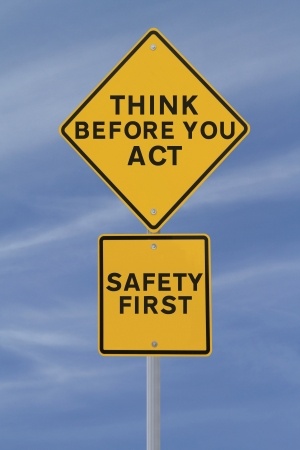 Now that winter is upon us, there are a few common sense matters that people need to think about to ensure safety of the public :
Now that winter is upon us, there are a few common sense matters that people need to think about to ensure safety of the public :
People who clean their driveways and put the snow back onto the roads that are just cleared .There is a reason why it was cleared in the first place, the reason being to ensure one’s safety from slipping and sliding when driving which can cause accidents and endanger one’s life.
People who do not clear the pedestrian walkway in front of their homes as they are required to within the specified time . Again, it is necessary to avoid accidents especially to the older folk who can slip and fall and break their bones since they are susceptible to this. Remember that wet snow when down trodden can become very icy with the slightest drop in temperature. Also think of the disabled in wheelchairs and the women with babies in their strollers who also use these paths.
People who drive in the winter ( snow storm, slick roads, poor visibility , lots of traffic, Etc.) just as they do in the summer without any regard to the different conditions. This is especially applicable to the NASCAR wannabes who consistently speed and cut in and out in traffic. Please remember that this is always very dangerous especially at this time of year as it is not always easy to stop quickly and safely in these conditions.
People who refuse to clean off the snow on the roof of their cars. They only clear off their windshield enough for them to see to drive. This is very dangerous to drivers behind people who do not clear off the snow on the roof of their vehicles since removing snow from the roof ensures that it won’t fly off while driving and obstruct the view of the driver behind you. Again, this can cause accidents as it is not easy to quickly stop safely in bad road conditions. This also applies to people who do not signal for proper lane changes. Although this can cause accidents all year round, it is more prone to occur in the winter months .
Toronto Police , OPP and CAA have launched a “winter driving safety program “, for those people who are not aware.
I have to talk about a few things which have been bothering me for awhile :
The majority of trucks whose drivers consistently speed on the highways. It would appear that most truck drivers have the mentality that because their trucks are big that they can intimidate car drivers . They are forever overtaking the cars and doing so recklessly . It is an extremely dangerous habit especially in the winter months. This habit causes innumerable accidents and as we so often see sometimes causes roll overs of their trucks resulting in serious injuries and possible deaths to both parties and their occupants.
Car drivers who consistently blast the music in their cars so the whole world can hear. It is a bad practice since it makes it difficult for the driver to hear any police sirens or ambulances so they can act accordingly. In addition , it is very distracting not only to the car driver but to other drivers or people who are close by.
Drivers who do not take proper caution when passing bicycle riders especially when making turns. There are far too many of these types of accidents which causes serious injuries and sometimes can result in death.
Young teenagers who practice the habit of speed racing. This is such a dangerous and reckless game as it can result in serious injuries or deaths not only to the drivers but to innocent people who were not involved in this practice, not to mention what it can do to their or their parents’ insurance . They can also be charged with serious driving offences which can result in severe fines and even possible jail and/ or loss of license. It can literally ruin their or their parents’ lives.
People who do not respect the speed limit in school zones. They appear to be always in a hurry and do not understand or care that they can hurt or possibly even kill children which could possibly be their own.
People who do not move aside to make way for emergency vehicles . They are either ignorant or not aware of the requirements which can result in them being charged. They do not realize or care that the emergency that these vehicles are rushing to could very well be a life or death situation .
This category also includes tow trucks. Slow down and move over. This could be you or a friend or relative in need of help at sometime or the other. You endanger the lives of the tow truck helpers when you do not.
Lastly, the winter season is fast approaching. There are people who knowingly drive on bad tires in the winter. They selfishly take the chance on getting to their destination without accepting the fact that they can cause very bad accidents which includes terrible injuries and deaths in the majority of cases not only to themselves but to other innocent people.
The RIDE and MADD programs are in force from November to January and you can be stopped and charged not only for drinking and driving but for various other driving infractions.
TRAFFIC ISSUES !
Slow drivers in passing lane on highway. . .
People, please stay out of the left passing lane on the highways if you are not in that lane to do so. It is very frustrating for people behind you in the lane who are trying to do so. I believe that people who use this lane have no idea or cannot read or understand the purpose for which these lanes are to be used. As a result , traffic can be backed up and tempers flare which can cause people to do irrational things which can cause accidents. I see this on a daily basis every time I am on the highway.
Drivers who do not signal when changing lanes . . .
People, please use your signal indicators in your car. In case you are not aware, they are to be used when changing lanes. It is very frustrating to have someone cut in front of you when you are not expecting them to do so especially if you are about to change lanes at the same time that they decide to do so. Again, this can cause serious accidents. I had a friend whose young seven year old daughter was in the back seat of her car when she had to swerve to avoid an accident caused by this and ran off the road and hit a pole. Her daughter was killed instantly because of the ensuing head injury which she incurred. My friend has never recovered from the trauma of losing her only child.
Cars who rush pedestrians on cross walks. . .
People, please be aware of and practice the rules for drivers when approaching and passing these cross walks.There are too many pedestrians seriously hurt or killed on a daily basis because these drivers want to pass ahead of the pedestrians . Be courteous and remember that this can be your parents, wives, husbands or children. I had a co- worker whose mother had a serious head injury caused by a driver who was in a hurry. She was never the same after this injury. There is no rush that is worth the ensuing heartache and guilt that an accident can cause in addition to which there will be serious charges laid against you. These charges can be as serious as a jail term , licence suspension , and / or severe fines which can have damaging repercussions on your insurance rates. Besides which, the victim can also civilly sue you.
SERIOUS TRAFFIC CONCERNS
I have to voice my concerns about the irresponsibility and lack of conscience of hit and run drivers and drivers who run red lights.
In the case of hit and run drivers, I really do not know or understand their thoughts behind leaving the scene of the accident without any conscience or concern whatever as to the state or well being of either the pedestrian(s) or in the case of a vehicle, the other driver or passengers in the other vehicle (s) involved in the accident. Their only concern is for themselves getting away and not being caught. They know that most of the times it is because they were speeding or drinking or in most cases both of these things . Their fear is only for themselves and the punishment that they will have to endure for their wrong .The fact that they can live with themselves is beyond comprehension especially after they hear the news or read about it in the newspapers. Sometimes these unfortunate people can have serious injuries which can lead to lifelong problems which may include paralysis or even death. We cannot blame it only on the teenagers as there are instances where they were adults. Maybe, the problem is with our laws in that the punishment for these activities is not severe enough. . .
Another case of irresponsibility is to do with drivers who take chances in running red lights.
Again, it is not only teenagers. I do not understand why so many people are always in a hurry to beat the red light. Where are they going that is so important that they risk injury or possible death to themselves or other parties involved .
People need to act responsibly and if you are late for an appointment or work, then leave a little early to avoid this situation . In most cases, this is not the problem. It is just a bad, nasty habit which can have serious consequences. Some people will speed up when they see the yellow signal instead of slowing down and stopping. I was involved in an accident in which another guy sped up and ran the red light which injured both my baby daughter and myself. In this instance it was a matured fifty four year old man. . .
I have two traffic related beefs . . .
My first beef is with people who still text or are on their phone while driving even though there are laws that penalize you for doing so. These laws constitute high fines and an increase of insurance rates.
They do not want to believe that they can cause an accident and possible injuries or death, not only to themselves but to other people. They think that they are invincible. Everyday we hear on the news of accidents that occur yet people take chances. It bugs me when I am driving and passes someone who is texting or are on their phone. The sad thing about this is that it is not only young people but educated business people as well. I wish that I could do something about it without causing a distraction for myself . . .
My second beef is with people who practice road rage for road infractions which they perceive were done to them by other drivers . It is just pure and simple ignorance . Once again, they do not realize or want to believe that their actions can cause serious accidents not only to themselves but to other people in other cars or possibly even pedestrians depending on whether they are on the highway or not. These accidents not only cause injuries but in most cases they result in death to innocent people .
They just do not seem to care about anyone but are only interested in getting even for what they perceive were infractions done to them. I have been on the highway on many occasions where I have witnessed this silly practice being done and all I can say is that it is the most dangerous and scariest thing ever.
The sad thing about this whole thing is that there never seem to be any police around when these practices which include near accidents occur and therefore you never hear about them on the news or read about them in the papers. The only times you hear or read about them is when there are actual accidents or deaths which occur as a result .
My concern is with car insurance companies who try to gouge their clients
When you are shopping for a car insurance , you receive several quotes from different companies who claim to try and give you the best policy to suit your needs.
If or when you do have a claim, even though it is not your fault, your policy still goes up when it is time to renew that policy. I can understand your policy going up if you are at fault , but why does it go up if it is not your fault ? They try to tell you that it does not, but they do. Even if they do put it up by a minor amount, it would not be a concern, but some put it up by a substantial amount.
I have had a personal experience which convinces me that they put up your insurance for no reason whatsoever.
I was with this particular company , (whose name I will not mention ), for a number of years with no accidents and suddenly on renewal my policy went up by over $150.00. I began to shop around and got a reasonable quote from another insurance company and decided to go with them. I then called my insurance company and told them that I would not be renewing my policy with them. They wanted to know why and I told them that their quotation on my policy was unacceptable and that I got a better quote from another insurance company and was going with them. To my utter amazement, they told me that they could give me a better quote ! I could not believe what I was hearing ? I said ” what ?. Are you telling me that you can give me a lower rate ?” They said “yes”. This even made me more angry. I asked them if they could give me a better rate, why did they quote me such a horrible rate by increasing my policy and what was the justification in increasing my policy rate. They had none and said that it was the going market rate.
I told them that this was very bad business and certainly not a good way of keeping clients by treating them this way. I told them that even if they matched the quote I was given, I would not stay with them or ever recommend them to anyone as I did not like their disreputable tactics.
I then moved my policy to the other company and have been with them ever since and very happy.
Teenagers believe that somehow they are invincible
especially with regard to traffic violations.
Everyday you read about them either speeding, street racing, driving while drug impaired, driving while under the influence of alcohol , or talking and texting on the phone while driving.
Although they hear about what can happen and its subsequent consequences, they do not think that it will happen to them.They do not seem to care that their actions can injure or kill someone and that they can also get hurt or have to spend a lot of their life in jail and/or in hospital. Sometimes they or their victims can be killed, permanently scarred or injured for life.They do not think of the impact it would have on their future lives with regard to their continuing education , jobs or a comfortable life. They do not think of the impact it can have on their parents, family and friends but continue to act in a selfish and thoughtless manner. Sometimes they end up bankrupting their parents who try to help to defend them in court by borrowing money and /or eventually having to sell their homes. Sometimes their parents even use up all of their retirement savings.
Parents need to try to instil these facts in their children’s heads as much as they are able to even if it is on a daily basis or whenever they get into a car to drive or to ride with a friend.
They also need to be aware that they should not get into a vehicle with anyone who has been drinking or is impaired because they also can get hurt or be killed.
Parents need to instil in their children to take an alternate method of transportation if they are ever placed in such a situation.
Teenagers like to be one of the crowd and will do things they know are wrong just for this fact.
They do not want to feel “left out” as they can be taunted.
Parents need to be aware of the friends their children hang out with by not letting down their guard.
6 Lessons I Learned From My DUI

This DUI has to be one of the hardest lessons that I had to learn. I was the ultimate soccer mom carpooling and going to all the out of town games with my son. I used to love driving out of town and to the beach with my girlfriends. I was also the social butterfly in all my circles with friends, family and coworkers. Losing my license not only affected myself but it also affected the loved ones around me. Even though I am so grateful for the way the people in my life supported me through this ordeal, it was a great adjustment on everyone’s part to take up. We all know that we shouldn’t drink and drive but what we don’t know is what to do if we get caught and what to look for in hiring your representation. Here are some of the lessons that I learned that I want to share with you.
- Get lawyers that specialise in DUI’s. I decided to save some money and get a reputable criminal lawyer to represent me who was not a DUI specialist, but aside from postponing the case almost a year, he couldn’t do anything for me. The officer didn’t show up and my lawyer couldn’t provide any strategies for my case. I feel like people underestimate this lesson but this alone is the key to winning or losing your case.
- The lawyer you choose should make you feel like they can win or will at least fight trying. Your lawyer should make you feel like your case is important and that they are taking you seriously.
- Your license is worth fighting for. Whatever you do, don’t give up and plead guilty. At the end of the day, whatever the outcome is you want to be proud that you did everything you could have done to keep you license.
- A $50 cab ride will save you the consequences of paying $2,500-$30,000 in lawyer fees to fight your DUI case, but if you get caught pay the money to fight.
- You will freeze on the bus in the winter if you don’t have a license to drive and you won’t like being restricted to taking the bus in order to live your life.
- If you drive be prepared for anything. Research a lawyer specialising in DUI’s beforehand and keep their card in your glove compartment or in your purse/wallet so you know who to call if anything happens. Be on the offence instead of the defence with the police.
When it comes to drinking and driving don’t depend on your feelings. I was almost home when I got stopped by RIDE and I blew way over the limit. Stick to the 2 drink rule regardless how you feel. Even though I was disappointed at my representation, I am grateful that I didn’t get into an accident or kill anyone. The only regret I do have is that I did not hire the lawyers that specialised in DUI’s only because I wanted to save money. Just because they are lawyers doesn’t mean that they specialize in DUI’s. Hopefully you won’t make the mistake I did. I wish I knew about Ontario Legal Ltd and their DUI lawyers when I was charged with my DUI offence.
I’m so happy I found a company like Ontario Legal Ltd. who have access to lawyers who specialize in DUI’s and Traffic Law. Now, at the very least, I can refer any family and friends that may need help in the future !
Expert In Reinstating Drivers Licenses
ONTARIO LEGAL LTD. is an expert in reinstating drivers licenses that have been suspended for demerit points, unpaid fines and ministry of Transportation suspensions. In most cases, our referred lawyers and paralegals can reinstate your Drivers Licenses in less that 10 business days.
Just imagine yourself or a friend not being able to drive for many years. Now being able to drive in less than 2 weeks.
In most cases, if you had to come to us before your Divers License Suspension . . .you may NOT have been suspended at all !!
If you are a Novice Driver (G1 or G2), your suspension may most likely be caused by an accumulation of too many demerit points. By using our service, we can save your demerit points and therefore, preventing a possible license suspension.
In addition by using our service, in most cases, you will never ever have to attend court or even attend your trial date. Therefore, you do not have to miss work, or school or even have to leave your home.
Have peace of mind knowing that an experience Lawyer and/or Paralegal is representing you in court. An agent, who has the knowledge, experience and legal background to WIN your case.
All of our referred Lawyers and Paralegals are members of the Law Society Of Upper Canada and are all in good standing.
ONTARIO LEGAL LTD.
We Have Higher Than Average Success Rate
Ontario legal Ltd. now has a higher than average success rate with No Insurance charges as well as Driving under suspensions.
Our clients very, very rarely receive Jail time for their Traffic Offences as most outcomes of these cases usually results in our clients Not Losing their Licence.
Again, our Lawyers and Paralegals are always on call 24 hours a day, 7 days a week.
Ontario Legal Ltd.
The Traffic Tickets Industry
ONTARIO Legal Ltd. refers more than 200 Clients a week to Lawyers, Paralegals within the Traffic tickets Industry. We also refer Criminal, family as well as Civil matters to very experience Lawyers/ Paralegals.
Every Lawyer and Paralegal that is on our referral list is a member of the Law Society of Upper Canada and are all in good standing. Our referred Lawyers and Paralegals constantly exceed our client’s expectations on a daily basis
Our clients own Testimonials reflect this.
ONTARIO LEGAL LTD.
ONTARIO LEGAL LTD is a FREE referral service
ONTARIO LEGAL LTD is a FREE referral service with access to experienced Lawyers and Paralegals. We even have access to a Former Justice of the peace who has experience not just in Traffic tickets but in Bail Hearings as well. We also have access to former Crown Attorneys (Prosecutors) who have many years experience prosecuting Criminal Cases.
Now they can work for you.
Our referred Lawyers and Paralegals will represent you in ANY COURT …anywhere in Ontario.
Save the time and headache of missing work/school by attending court cases yourself where you may not know the law.
Let us attend for you.
In most cases, YOU WILL NEVER HAVE TO ATTEND YOUR COURT CASE !!
All consultations with our referred Criminal Lawyers and Traffic Tickets agents are absolutely free!! No Charge !!
For your convenience, We are ALWAYS available 7 days a week. ….24 hours a day, INCLUDING ALL HOLIDAYS
Please feel free to contact us anytime.



